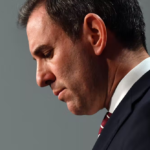
This speech was presented by Prof Johannes Stoelwinder, Chair, Health Services Management, School of Public Health & Preventive Medicine, Monash University, at the the GAP/ACHR Congress on Australia’s Health on Monday, 30 November 2009.
Is Medicare, as a publicly funded universal health scheme, sustainable over the next 20 plus years?
This is the fundamental question we need explore in a Congress focused on health reform.
I will argue today that there are two challenges to its sustainability
- the first is financial, and
- the second is its governance.
I will then look at the National Health & Hospitals Reform Commission’s recommendations about the governance of Medicare and suggest that they will need to be beefed up to ensure the survival of the Medicare we expect.
Australia currently spends 9.1% of GDP on health, which is around the average for OECD countries. Various projections have been made of future growth of health care costs given current trends, new technology and predicted demographic changes. The 2007 Intergenerational Report projects that Australian government spending on health alone, as a percent of GDP, will nearly double in the forty years from 3.8% in 2006/07 to 7.3% in 2046/47.
[1] Others have predicted that total health spending will increase to 12.5% of GDP by 2042.
[2]

Of course, the amount we spend on health is a matter of choice and this will be heavily influenced by the overall strength of the economy. However, the Australian Government’s share of growth in health costs must create significant policy concern, if only for the contribution it makes to the size of the government deficit the Intergenerational report predicts. This will become even more of a focus if the Commonwealth does, as it should, become the single funder of Medicare entitlements.
This further raises the stakes on concerns I have about the sustainability of the governance arrangements we have in place for Medicare. Let me elaborate.
The governance problems start with the moral hazard associated with any universal health care scheme, whether financed through tax or insurance. This results in public expectations of access to services independent of cost. It results in providers delivering a significant amount of inappropriate, inefficient and discretionary care. Some estimate, although I have not seen it validated, that this could represent 30% of total health care expenditure.
Then there are the operational problems in health care. There is the significant problem of safety and quality of care; we have rationing with waiting lists and treatment delays; we have fragmentation and complexity that makes the coordination of care for those with chronic disease problematic. We have lack of standardization of care processes that makes the gains available from ehealth and other organizational strategies so hard to realize.
We have known about these problems for a long time, so why have they not been fixed yet?
In my view the reasons the problems have been so intractable has to do with the failures of the governance of our health care system. The first factor is provider power, which starts with clinical autonomy. Health professionals are the experts on what care is needed and how it should be done. The community trusts them in this. This gives them, and their representative organizations, significant power.
This power then manifests itself politically because we have a tax funded health system and the government runs the public hospitals.
In a tax funded system, special interest groups are obligated to engage in the political process to at least defend, if not grow, their share of the government’s budget. We see this in the ongoing media saga of public hospitals in trouble, apparently always because they don’t have enough money. Let me illustrate.
Two weeks prior to the COAG meeting in November last year to deal with the current Australian Health Care Agreement, the AMA ran a media blitz on its “Public Hospital Report Card”, calling for an immediate injection into public hospital funding of $3billion.
[3]The Premiers followed two days before the meeting with a demand for a more modest $2.4billion, but with a call for 9% annual increase in funding.
[4]
In the end the Commonwealth agreed to inject $2.55 billion of initiatives and increased base and an annual inflator of 7.3% for the next 5 years.
This brief case study demonstrates how resource allocation decisions are made as the result of special interest politics. There is no direct political counter-pressure to help the politicians resist these interest groups – in fact the community at large trusts the interest groups over the politicians.
This unsustainable COAG deal needs to be seen in the context of the last Federal election in which Mr Rudd, as the then leader of the Opposition, took on fixing the public hospital system as a major plank of the Labor Party’s health platform – “Rudd to mend public hospitals” was the headline the Australian newspaper used to report this commitment.
[5]
It should be noted that while the rhetoric of the election, repeated often since, was that the Howard government had starved the public hospital system of funding, the truth is that since 2002/03 annual increase in public hospital expenditure have averaged around 9.5% per year (although the Commonwealth’s share did decline a little).
[6]
It would seem that throwing money at the problem has not yet fixed it!
It is in this political context that the Rudd Government established the National Health & Hospital Reform Commission, chaired by Dr Christine Bennett, who will be speaking to you on Commission’s deliberations this afternoon. My apologies to her, but I will have to preempt some of her presentation to deal with the governance problems I have outlined.
While the Commission’s analysis of the governance problems of the health system was not as overtly political as mine has been here today, it nevertheless saw the need for significant governance reforms.
The key to the Commission’s governance recommendations was that we need to have “one health system” and that starts with having a single public funder – the Commonwealth.
(Remember the Commission did not have the mandate to look at private funding.)
To achieve this, the Commission made three recommendations:
- That COAG agree a “Healthy Australia Accord”. This essentially seeks to get an agreed position on the respective roles of the Commonwealth and State and Territory governments. It includes the role of the Commonwealth in workforce and training, primary care reform and other specific recommendations made by the Commission.
- That the Commonwealth progressively take over funding responsibility for public hospitals, starting with payment of 40% of the efficient cost of public hospital episodes of care. The intention is that the Commonwealth’s share of funding would increase over time as it builds its capacity to purchase efficiently.
- That further research and development be undertaken on a model of competing private and public health plans that would be tax funded. The Commission’s working title for this model is “Medicare Select”.
The first two recommendations are not that unexpected in an age of “Cooperative Federalism”, but why would the Commission have landed on its third recommendation, which has the potential to radically transform Australia’s health care system?
The “Medicare Select” model was first floated in the Commission’s Interim Report and its roots are in a longstanding discussion, first promoted in the 1970s by Alain Enthoven, a USA economist, who coined the term ‘managed competition’
[7] and it still informs today’s USA health reform debate. Dick Scotton flirted with the idea for Australia in the nineties
[8], but the concept was seen at the time to be too difficult and would lack stake-holder support.
[9]
However, recent reforms in the Netherlands, based loosely on these concepts, has reinvigorated the idea. If you are interested in more details of the Dutch reform and how it could be applied in Australia see my report for the ACHR which is available from their website (or simply Google ACHR Medicare Choice).
[10]
However, before I go into more detail about how a Medicare Select model might work I want to go back to the Commission’s recommendations.
In launching the Commission’s Final Report the Prime Minister said about these governance recommendations that he would, and I quote, “leave each of these three options on the table for the next six months or so, as we engage in a detailed, direct consultation with the health sector and with communities around the nation…”, which he and the Minister have been doing.
Then a special COAG meeting is to be called before the end of the year to “seek the States’ views”. A further COAG meeting will be held early next year at which the Commonwealth is to put its reform plan.
The Prime Minister went on to reiterate his election pledge that if agreement with the States is not reached, quote, “the Commonwealth will proceed to seek a mandate from the Australian people for the proper reform of our health system for the future.”
The Prime Minister continues to raise the political stakes, some might say “painting himself in a corner”, on fixing the public hospital problem. For example, with the release of the latest AMA Public Hospital Report Card last month the PM was reported to respond by saying, I quote, “I basically agree with them. There is a real problem out there. And therefore, the Australian government, rather than simply pushing this problem under the carpet, believe it’s time we have a fully fledged national debate about how we fix this system for the long term. It is root and branch reform that is necessary.”
[11]
Well, do the Reform Commission’s recommendations on governance constitute the basis of “root and branch” reform?
The first step, the Healthy Australia Accord, requires the Commonwealth and States to agree at least on the principle of their respective roles and in particular the move to a single public funder, which underpins the other steps.
Many States seem deeply wedded to running their public hospital system, although God knows why, given the political and financial grief they get from them. Most State Health Ministers have taken the ‘hands-off my public hospitals” position in response to the Commission’s recommendations.
One suspects it will take significant incentives for the Commonwealth to get the States over the line on this first step.
The second step is the progressive takeover of public hospital funding by the Commonwealth, starting at 40% of the efficient unit price and progressively increasing to 100%. This will be a risky phase with its inherent incentive for hospital cost inflation. At the beginning the Commonwealth will have no levers to control the size of this outlay – it is uncapped. Further, the States will then be spending only 60 cents of every “efficient dollar” on their public hospitals and this ratio will decrease over time. These are cheap dollars to throw at any problem they feel under pressure from by their public hospital interest groups. If they have funded 9.5% annual increases in public hospital expenditure over the last 6 years, what will the increase be when they are guaranteed to have to pay for only 60%, or less, of the increase?
This problem takes us to the third step — Medicare Select. Some structure has to sit between a single public funder and the multiple public and private sector providers to be responsible for what we call “smart purchasing”.
Smart purchasing involves not only a good price, but responsiveness to consumer preferences, joined-up services for people with special needs, such as those with chronic conditions. To do this it needs to operationalise the benefits of a single funder by purchasing across all elements of the health care provider landscape from primary care, disease management programs, specialist and hospital care, rehabilitation and sub-acute care.
In a paper, due to be released this week, prepared by Mary Foley, Christine Bennett and myself, we refer to this purchasing role in the health care system as the “meso” level (between the macro level of funding and the micro level of providers).
What are the structural options for this meso level? One option could be for State Government health departments to take this role. This is in essence what the Canadian health care system does. Another is to have an NHS type structure, as in the United Kingdom, with regional health or purchasing authorities being responsible for purchasing on behalf of a population defined by where people live – pejoratively referred to in the NHS as the “post-code lottery”.
Both these options retain the governance problem of government run health systems, they provide citizens with no choice and thus there is no framework for using competition to drive efficiency and service. These options were not recommended by the Commission, instead it recommended further consideration be given to an alternative meso level structure, Medicare Select.
The Commission’s outline for Medicare Select – and remember its recommendation was for more research and investigation into the idea – is inevitably sketchy. Its key features are that it is wholly tax-funded, so it is not social insurance, as some critics have mistakenly asserted.
The default arrangement is that all Australian residents would remain covered by Medicare. This would be administered by Medicare Australia, doing what it does now, paying your MBS and PBS benefits to which is added paying for your public hospital care, probably via a Hospital Benefit Schedule. Medicare Australia would be encouraged to become a smarter payer and in this way be the default plan.
Australians also have the choice to join an alternative health and hospital plan, taking their Medicare funding, adjusted for their risk, with them. It is assumed the private health insurance funds would develop as plans, but other bodies might do so as well. This could include State Governments, or health provider groups such as the Catholic health group. These alternative plans would need to meet a Universal Service Obligation, essentially Medicare entitlements and access standards. Plans could compete and attract members by offering better service integration and consumer focused care. They might even integrate it with private health insurance offerings and other insurance features such as gap coverage.
In my view this is a step in the right direction. It gives consumers choice and creates some competition between the public plan and between alternative plans. However, it does not, in my view, go far enough to deal with the governance problems I have outlined.
Firstly it remains funded from general taxation and people default to the Government plan. This means that the politics of how much to spend on health care will remain subject to the same political games. All that will have happened is that the focus will shift from State to Federal politicians. There is no formulaic link to economic growth and no counter political pressure to un-sustainable growth in expenditure.
Secondly, tax based funding and the incremental shift of consumers to competing plans does not allow for significant price competition between plans, which should be the major lever to contain costs, improve services and engage consumers to express their preferences in terms of trade-offs between price, extra benefits and constraint.
How could we solve these problems? In my view we can do that by noting more of the features of the Dutch model. Here’s how.
If we were to pay for government’s spending on health care through income tax, rather than from consolidated revenue, the Commission has estimated it would take 14% of our taxable income. That’s quite a bit more than the 1.5% Medicare levy you thought was paying for Medicare!
Following the Dutch model, if we paid half of the 14% – in other words 7%, as a hypothecated Medicare Levy we would immediately create an explicit link between health care spending and economic growth and a political counter-pressure to further increased spending. Government would explicitly have to alter the 7% if it wanted to spend more.
Secondly, if all adults, perhaps excluding those under the current Medicare low-income threshold, then had to pay a substantial community-rated direct premium to their chosen plan, there would be intense price competition between plans. Using the Dutch experience this amount would be in the order of an average of $2000 per adult per year. Government would pay for children from income tax revenue.
The 7% levy and the average direct payment of $2000 would be reduced from people’s income tax, leaving each individual’s tax burden the same.
Participating in one of the competing plans would be compulsory. Plans would be required to offer a default Medicare package with open enrollment to which they can add other features and insurance tools such as deductibles, but not exclusions or restrictions.
The hypothecated Medicare levy and government funding for children would be paid to the consumer’s selected plan according to a risk-equalization formula. This aims to remove risk selection by plans and provides the financial incentives to manage the care needs of its members – especially those with chronic disease.
These arrangements engage consumers directly in the burden of determining how much to spend on our health care system. The increase is likely to be organic, not the lumpy and inefficient escalation and constraint that reflects political circumstances.
The battle for interest groups is then played out in the consumer market place, not in the political/media market place. The meso level is populated by competing plans that have to balance consumer preference and provider relationships, not by public sector bureaucracies.
The Commonwealth, as the single funder, will continue to have the role of deciding what is covered in the mandated basic Medicare package. It will control the regulatory structure required to make the arrangement work and to inform and educate consumers in their role as active participants in the governance of the health care system.
The Dutch have shown that such a model can work. It has now been ranked as the most consumer oriented health system in Europe for the last two years in a row.
[12] Their growth in health care costs over the last 3 years has been between a half to two-thirds of ours.
[13] Waiting lists have disappeared. Consumers both admire the quality of their system and know that it is expensive.
The Reform Commission’s recommendation for more research and development of the Medicare Select model over the next 2 years allows for variants, such as I have suggested, to be considered. The vital step now is to get the Government to commit to this recommendation I encourage all of you to do what you can to ensure that this happens.
Prof Johannes (Just) Stoelwinder (MBBS, MD, FRACMA, FACHSE, FAFPHM) is Chair of Health Services Management, Department of Epidemiology and Preventive Medicine, Monash University. He is also a Director of Medibank Private Limited. Past appointments include Professor and Head of the Health Service Management Development Unit at Flinders University and Board Member of the Private Health Insurance Administration Council. For over 16 years, until the end of 1998, he was Chief Executive Officer of the Southern Health Care Network, and its antecedent teaching hospitals, the Monash Medical Centre and the Queen Victorian Medical Centre. Just has also held professorial appointments in the Business School and Medical Faculty at Monash University and has been a Visiting Fellow at a number of international organisations including the King’s Fund, London, UK; Kaiser Permanente Medical Group, Oakland, Boston University and the Wharton School, University of Pennsylvania, USA. He was formerly a specialist physician and Fellow of the Australasian College of Physicians.
[1] Intergenerational Report 2007. Page 49. Available from: www.treasury.gov.au/igr
[2] Easing the pressure: The Intergenerational Report and Private Health Insurance. 2004. Econtech Pty Ltd with Harper and Associates and Philip Hagan.
Melbourne: Medibank Private Limited
[3] The Canberra Times “Hospitals ‘urgently need’ $3b injection”, 12 November 2008.
[4] The Age, “States demand hospital injection”, 21 November 2008
[5] The Australian “Rudd to mend public hospitals”, 24 August 2007.
[6] Table 4.2 Australian Institute of Health and Welfare 2009. Health expenditure Australia 2007–08. Health and welfare expenditure series no. 37. Cat. no. HWE 46. Canberra: AIHW.
[7] Enthoven AC. Consumer-choice health plan. NEngl J Med 1978;298:650-8, 709-20.
[8] Scotton R. Managed competition: the policy context. Melbourne Institute Working Paper No.
15/99. 1999. Available from: http://melbourneinstitute.com/wp/wp99n15.pdf
[9] Productivity Commission, Managed competition in health care. 2002.
[10] Stoelwinder JU. Medicare Choice: Insights from Netherlands health insurance reforms. ACHR. October 2008. http://www.achr.com.au/pdfs/MedicareChoice.pdf
[11] The Age “Hospitals are sick: Rudd”, 14 October 2009.
[13] Westert GP, Burgers JS, Verkleij H. The Netherlands: regulated competition behind the dykes? BMJ 2009;339:b3397.

 Of course, the amount we spend on health is a matter of choice and this will be heavily influenced by the overall strength of the economy. However, the Australian Government’s share of growth in health costs must create significant policy concern, if only for the contribution it makes to the size of the government deficit the Intergenerational report predicts. This will become even more of a focus if the Commonwealth does, as it should, become the single funder of Medicare entitlements.
Of course, the amount we spend on health is a matter of choice and this will be heavily influenced by the overall strength of the economy. However, the Australian Government’s share of growth in health costs must create significant policy concern, if only for the contribution it makes to the size of the government deficit the Intergenerational report predicts. This will become even more of a focus if the Commonwealth does, as it should, become the single funder of Medicare entitlements.











